|
Adolf Hitler Visits Vienna,
March 1938
Hitler visited Austria immediately following
the Anschluß, or union of Germany with Austria, on 12 March 1938. He made a
triumphal entry into Vienna on 14 March, met by cheering crowds. Click
here for a MapQuest map link to Vienna.

|
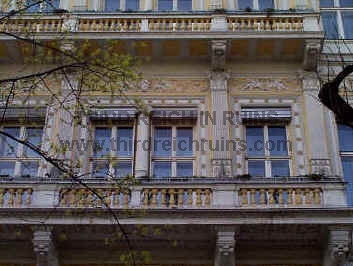
|
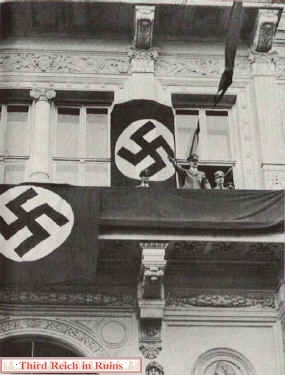
|

|
| When in Vienna, Hitler
stayed at the famous Hotel Imperial on the Ring, near the Opera. The building has hardly
changed at all. (National Archives, RG 242-HB; "Illustrierter
Beobachter," Special Edition, 20 March 1938 - "Österreichs
Befreiung" (Austria's Liberation) |
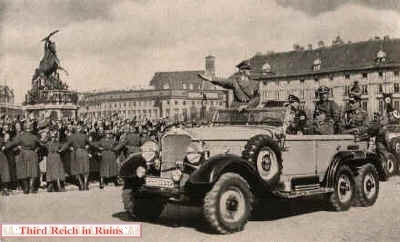
|

|
| Hitler made a speech to
the Viennese from a balcony of the Habsburg palace, the Hofburg, on 15 March 1938. In the
background is the heroic statue of Archduke Karl. (Heinrich Hoffmann,
"Hitler in seiner Heimat," Munich, 1938) |

|
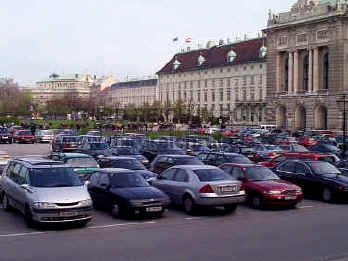
|
| The crowd was gathered
in the Heldenplatz (Heroes Square), a large open area bounded by the several wings of the
Hofburg. (National Archives) |
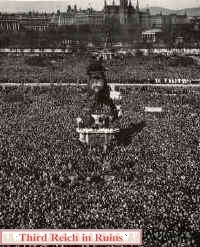
|
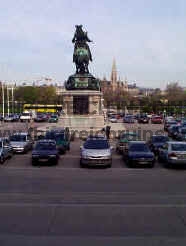
|

|

|
| The crowd in the
Heldenplatz numbered several hundred thousand. These photos show the crowd around and on
the statue of Prinz Eugen of Savoy (Prince Eugene). In the background can be seen the
famous Vienna City Hall (Rathaus). (National Archives) |

|

|
| At a later date, members
of the Austrian SS march past Prinz Eugen's statue in the Heldenplatz. (Gerd
Rühle, ed., "Das Dritte Reich," Berlin, 1938 ed.) |
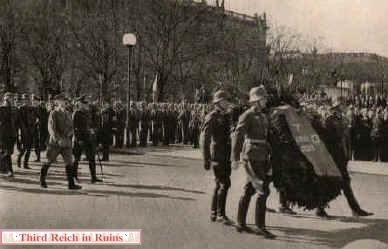
|
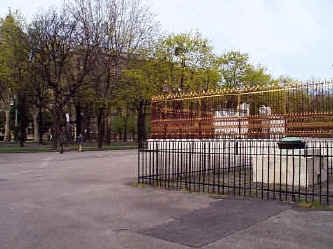
|
| Hitler laid a wreath at
the Austrian War Memorial, on the Ring outside the Burgtor of the Hofburg. The modern
photo has been pulled back some to show one of the eternal flames outside the memorial.
Although still present, these flames are no longer lit, or marked as memorials. (Heinrich
Hoffmann, "Hitler in seiner Heimat," Munich, 1938) |
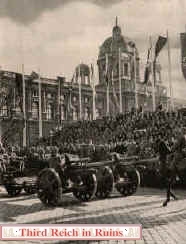
|

|

|
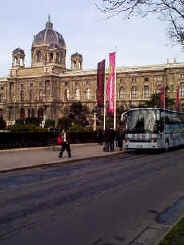
|
| The Nazis
orchestrated a massive parade of military units and vehicles around the Vienna Ring. Here,
Hitler on a reviewing stand in front of the art and natural history museums watches as
towed 105mm artillery pieces and Pzkw. II tanks parade past. (Heinrich Hoffmann,
"Hitler in seiner Heimat," Munich, 1938) |

|

|
| Units of the Austrian
Army parade past the Austrian Parliament building, with its famous statue of Pallas Athena
in front. (Heinrich Hoffmann, "Hitler in seiner Heimat," Munich, 1938) |

|

|

|
| Hitler's motorcade drove
to the City Hall, with the Burgtheater in the background across the Ring. ("Unser
Führer," special edition of the "Illustrierter Beobachter" for Hitler's
50th birthday, 20 April 1939, Munich, Franz Eher Verlag; Heinrich Hoffmann,
"Hitler Baut Großdeutschland," Berlin, 1938) |
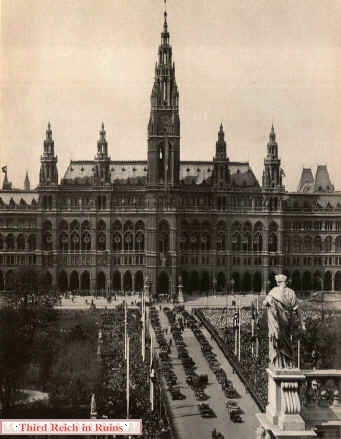
|

|
| Hitler's motorcade
reaches the Rathaus (City Hall). The period photo was taken from the upper
balcony of the Burgtheater across the Ring (this and the above two photos were taken on 9
April 1938, the day before the public vote for Anschluß). (Heinrich
Hoffmann, "Hitler Baut Großdeutschland," Berlin, 1938) |
Vienna
During the War
Vienna had several important arms
and munitions factories, and the threat of air attack led to erection of huge flak
(anti-aircraft) towers around the city, starting in late 1942. The towers were built in
pairs, with one large tower ("G-Turm") for the main anti-aircraft guns and a smaller tower
("L-Turm") for
command and control, radar, searchlights, and smaller caliber guns. There were eventually six of
these towers (in three pairs), and they are all still there today. Following the war,
engineers determined that the explosives necessary to bring down these towers would
severely damage the surrounding buildings, so they were left in place. Historical markers
explain their presence.
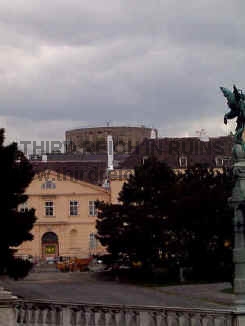
|

|

|
This G-Turm is located
in a military barracks area called Stiftskaserne, near the art and natural history
museums. Its companion L-Turm is nearby in Esterhazy Park, southwest of the
city center. The Stiftskaserne tower was the most heavily-armed Vienna flak tower,
mounting four twin 12.8cm guns. |
These towers are
located near each other in the Augarten, north of the city center. The larger
G-Turm
mounted four large caliber guns on the top (10.5cm later 12.8cm), with platforms for
eight
smaller guns (2.0cm or 3.7cm) around the periphery. The smaller tower mounted searchlights,
radar and smaller guns. Some of the platforms for smaller flak guns around the
periphery of the G-Turm were removed in 2006-2007 because they were
deteriorating and in danger of falling off the tower (the photos on this
page were taken in 2001). |
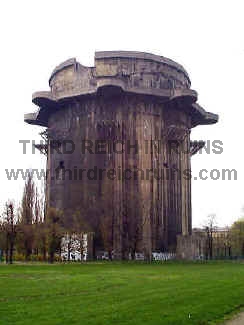
|

|
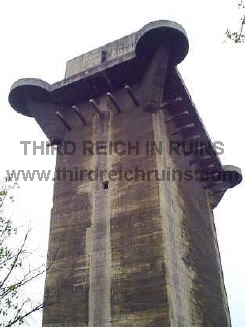
|
Further views of the
flak towers in the Augarten. The hole
seen near the top in the center photo was a result of Soviet large-caliber
artillery fire in 1945.
Recent investigations inside the larger gun tower show that the interior is in a very damaged
condition today, reportedly from a 1946 explosion of stored flak
ammunition, caused by a fire set by children playing in the tower. These
are the tallest towers in Vienna (the G-Turm is 177 feet high), and they
had concrete projections mounted below their lower platforms to take the
place of scaffolding for eventual repair work in the case of bomb or other
damage, as scaffolding that high would have collapsed of its own weight. |

|

|

|
Left to
right - Augarten G-Turm tower in 1943, Esterhazy Park L-Turm tower in 1943,
Stiftskaserne G-Turm tower in 1952. The square cut-outs seen at the top
rims of the towers were for large cranes that were mounted on the tops of
the structures. The L-Turm in the center mounts a Würzburg-Riese radar
dish. The Vienna G-Turm gun towers are of the styles known as Type 2 (Arenberg
Park, below) and Type 3 (Augarten and Stiftskaserne, above). |
|

|

|

|
|
On the left, the L-Turm in Esterhazy Park has
been converted and opened
to the public as an aquarium/terrarium. Center and right - the G-Turm
and L-Turm towers in
Arenberg Park. (photos donated) |
 |
 |
| The G-Turm
towers of Types 2 and 3 were designed to provide some overhead cover
from bomb shrapnel and low level attack for the gun crews. The two
photos above show gun crews at drill in the Augarten G-Turm (Type 3).
The guns were mounted in pits with circular concrete aprons around the
periphery. In contrast, the twin 12.8cm guns below were in an open mount
in one of the Berlin flak
towers. (Bundesarchiv) |
 |
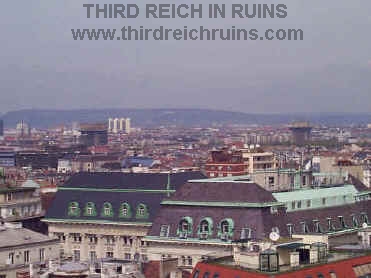
|

|
| These are the Augarten towers as seen
from the St. Stephan's Cathedral tower. |
The towers seen in the center and
right-center of this photo are located in Arenberg Park, southeast of the city center. |
Click here
to see photos of flak towers and guns in Berlin.
Vienna Flak Towers webpage --
http://www.turbo.at/geheimprojekte/flaktuerme.htm
- detailed information on construction, types, history.
Excellent photo page on the Vienna flak towers -- http://www.airpower.at/news03/0813_luftkrieg_ostmark/flaktuerme.htm

|
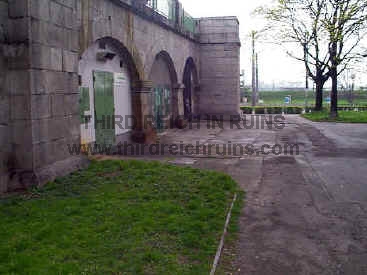
|
| Officers of the 2nd SS
Panzerdivision "Das Reich" discuss the defense and evacuation of Vienna on 13
April 1945. Left-right, SS-Obersturmbannführer Otto Weidinger (commander of regiment
"Der Führer"), SS-Standartenführer Rudolf Lehmann (acting division commander),
unk. The officers are conferring on the Vienna side of the Danube River, at the foot of
the Floridsdorfer Bridge. The old bridge was destroyed during the evacuation and a new
bridge took its place during post-war construction. However, the old bridge piers are
still in the river, and this part of the southern bridgehead still exists, allowing an
exact modern comparison. ("Wenn alle Brüder schweigen," Osnabrück,
Munin-Verlag, 1981 ed.) (MapQuest
Map Link) |

|
| One of the last Pzkw. IV
tanks of Panzerdivision "Das Reich" guards the Vienna side of the Floridsdorfer
Bridge. Otto Weidinger (in overcoat) walks toward the camera in
the center of the photo. (Will Fey,
"Armor Battles of the Waffen-SS," J.J. Fedorowicz Pub., 1990) |
 Back to the Third Reich in Ruins homepage
Back to the Third Reich in Ruins homepage
|
